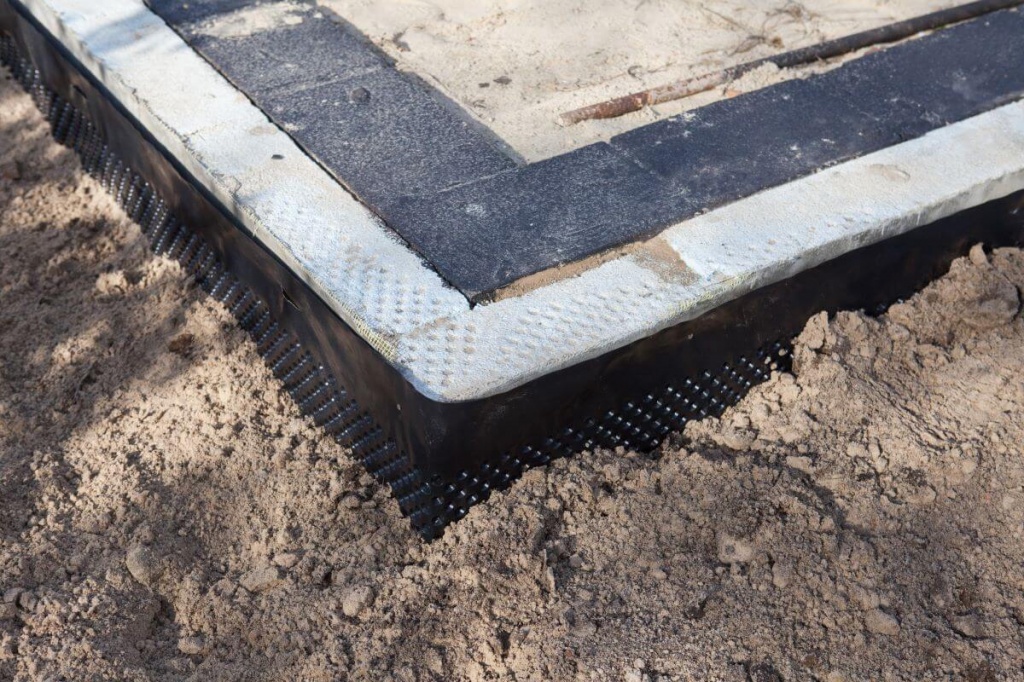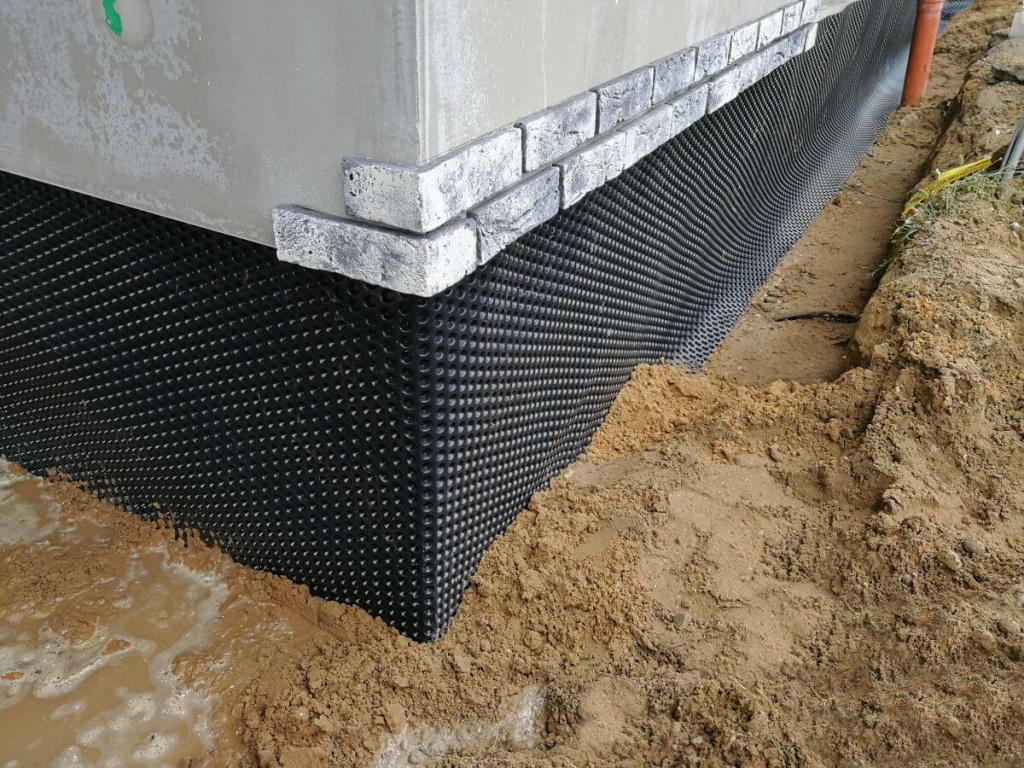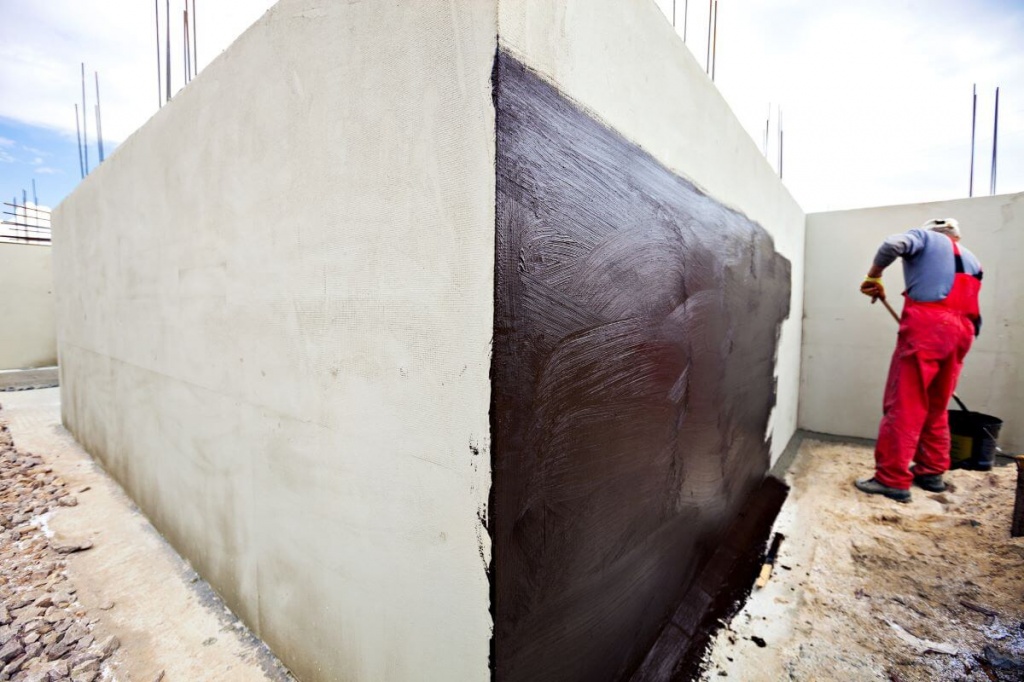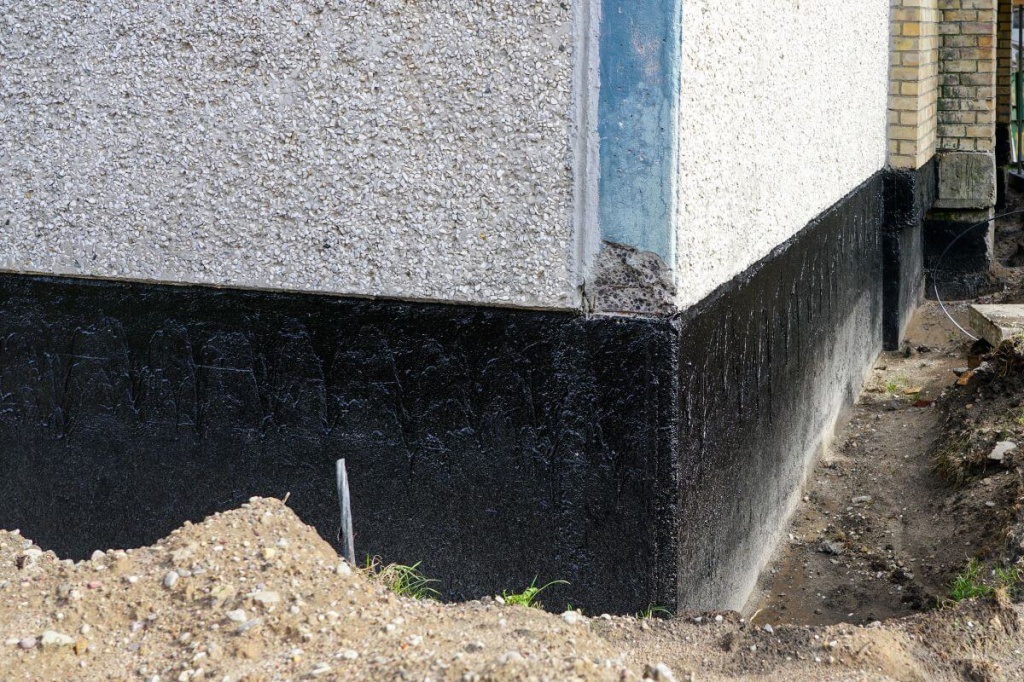The vertical surfaces of a buried foundation are most susceptible to the negative effects of moisture. They come into contact with the soil, which may contain groundwater and meltwater, as well as with precipitation above its surface. Exposure to water and damp environments over time can have a negative impact on supporting structures, leading to their destruction. To avoid this problem, vertical waterproofing of the foundation is performed using special surface treatment products. Let’s take a closer look at the reasons why waterproofing is necessary, as well as the materials that can be used to protect from moisture.
WHY CARRY OUT WATERPROOFING TREATMENT?
Concrete monolithic structures are characterized by increased sensitivity to moisture. The following negative changes may occur upon contact with such an environment:
- erosion of the monolith, removal of mineral components from the composition, reduction of its strength, increase in the number and volume of pores and voids;
- the appearance of corrosion of reinforcement as a result of contact with moisture penetrating inside. Corrosion will lead to a weakening of the frame, cracks, and subsidence of the foundation;
- destruction as a result of freezing due to the filling of pores and capillaries with water, which, when hardened, can lead to cracks and chips on the surface.
All of the listed negative factors affecting the foundation of the house can be neutralized by carrying out proper and high-quality waterproofing of the vertical surfaces of supporting structures.

PREPARATION FOR WATERPROOFING WORK
One of the most important stages is the preparation of concrete for waterproofing work. It is best to carry them out directly at the construction stage, immediately after the mortar has hardened and before backfilling with soil. In this case, you can significantly save time and immediately ensure high structural strength. If waterproofing of an already finished object is carried out, then earthworks are added to all preparatory work, which is needed to gain access to the outer surface of the foundation. The base is prepared as follows:
- Any dirt, traces of building materials, etc. are removed from the surface;
- The base is leveled. This applies most of all to block foundations that have joints and gaps between individual masonry segments. In this case, they need to be securely sealed, avoiding the possibility of voids and channels for moisture to enter;
- if the work is carried out on a finished site, then after excavating the soil and gaining access to the monolith, you must wait several days so that the material dries out and moisture does not remain inside after applying waterproofing.
The interior of basements and basements is prepared similarly. Let’s look at the list of the most popular materials used in waterproofing work.

ROLLED WATERPROOFING MATERIALS
They are usually made on a bitumen base and consist of a fiberglass canvas coated with a modified resin. Application is carried out by fusing to the surface or gluing onto special bitumen mastics that provide the necessary adhesion to the surface. During installation, the sheets must be glued overlapping to ensure the seams are protected from leakage. Such materials are used relatively infrequently due to the complexity of installation, as well as the possibility of peeling off in the future, under the influence of soil pressure and other destructive factors. Suitable for protecting the foundations of outbuildings or during construction on soils with minimal groundwater content. Not used for internal waterproofing of basements.

CEMENT-BASED COATINGS
This category includes waterproofing, consisting of cement and a number of mineral fillers. To increase elasticity, strength, and other performance characteristics, polymer additives of acrylic resins, silicone, and other similar materials are often used. For preparation (depending on the brand), ordinary water or a special composition that comes with two-component mixtures is used. After preparation, it forms a paste-like material, applied to the surface using:
- spatula;
- trowel;
- brush or roller depending on consistency.
Waterproofing of this type can have a penetrating effect, filling the surface pores of the concrete base, which increases their adhesive properties, and also allows you to create a complete barrier layer that eliminates the possibility of leaks. When working with such material, it is necessary to pay maximum attention to the internal and external corners of the foundation, thereby eliminating the possibility of untreated areas appearing. It is also necessary to prepare the concrete well before application, remove all dirt and poorly fitting fragments, otherwise, over time, cracks or peeling of the waterproofing may appear in such areas. Suitable for interior work.

BITUMEN AND POLYMER MASTICS
Mastics have a liquid structure. They contain bitumen, polymer materials, solvents, and water, depending on the specific brand and modification. Their advantages:
- ease of application, for which a brush or roller is used, the ability to create seamless and monolithic barrier coatings;
- high adhesion, penetrating action, allowing filling of pores and increasing the strength of the connection of materials;
- resistance to mechanical, chemical, and other effects of contaminated groundwater;
- UV resistance. You don’t have to worry that the waterproofing will be damaged under the rays of the sun while waiting to finish;
- maintaining elasticity during temperature changes, even with significant cooling, the coating does not become brittle and retains its performance properties;
- durability and reliability. Service life is 10 years or more depending on the selected material;
- economical consumption when treating surfaces with different levels of absorption;
Mastics can be used for both external and internal treatment of basement and basement walls. At the moment, such compositions are the most frequently used and widespread in private construction.
CONCRETE INJECTION
The injection procedure involves the introduction of special compounds into a concrete monolith aimed at filling cracks and internal voids, blocking the capillary movement of liquid and moisture inside the base. For the procedure, the surface is drilled, after which polymer-based materials are introduced through special guides. Injection waterproofing products can produce the effect of crystallization, foaming, and increasing volume when in contact with moisture. As a result, it is possible to fill all the smallest internal pores and interconnected voids. As a rule, this procedure is used as a repair measure and is aimed at eliminating leaks that form during the long-term operation of the foundation. The injection is carried out from the inner basement. If a basement is not provided, then it can be carried out outside.
Read more about foundations:



